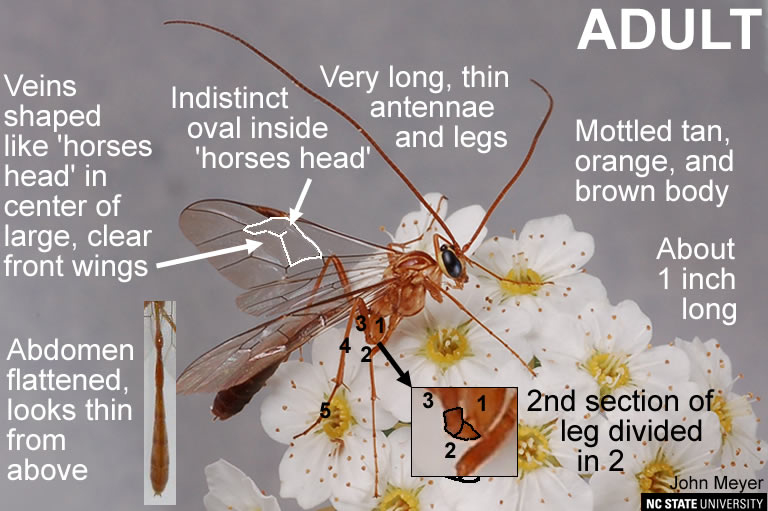Enicospilus Wasp
go.ncsu.edu/readext?563389
en Español / em Português
El inglés es el idioma de control de esta página. En la medida en que haya algún conflicto entre la traducción al inglés y la traducción, el inglés prevalece.
Al hacer clic en el enlace de traducción se activa un servicio de traducción gratuito para convertir la página al español. Al igual que con cualquier traducción por Internet, la conversión no es sensible al contexto y puede que no traduzca el texto en su significado original. NC State Extension no garantiza la exactitud del texto traducido. Por favor, tenga en cuenta que algunas aplicaciones y/o servicios pueden no funcionar como se espera cuando se traducen.
Português
Inglês é o idioma de controle desta página. Na medida que haja algum conflito entre o texto original em Inglês e a tradução, o Inglês prevalece.
Ao clicar no link de tradução, um serviço gratuito de tradução será ativado para converter a página para o Português. Como em qualquer tradução pela internet, a conversão não é sensivel ao contexto e pode não ocorrer a tradução para o significado orginal. O serviço de Extensão da Carolina do Norte (NC State Extension) não garante a exatidão do texto traduzido. Por favor, observe que algumas funções ou serviços podem não funcionar como esperado após a tradução.
English
English is the controlling language of this page. To the extent there is any conflict between the English text and the translation, English controls.
Clicking on the translation link activates a free translation service to convert the page to Spanish. As with any Internet translation, the conversion is not context-sensitive and may not translate the text to its original meaning. NC State Extension does not guarantee the accuracy of the translated text. Please note that some applications and/or services may not function as expected when translated.
Collapse ▲- Common Name: Ophion Wasps
- General Category: Parasitoid
- Taxonomic Classification: Hymenoptera: Ichneumonidae
- Scientific Name: Many species
Description
These are large, stingless wasps that are commonly found at porch lights, due to their somewhat unique habit (at least for wasps) of flying at night (i.e. nocturnal). Their size and shape means they may be mistaken for crane flies. They parasitize the larvae (caterpillars) of various large moths. Because they are parasitic on other insects and don’t defend large colonies, they are harmless to humans.


Identification
Review the images for tips on how to identify these predators.
Adults
Large insects approximately 1 inch long. The bodies of these wasps are mottled tan, orange and brown with dark eyes. The ‘horses-head’ shape formed by veins in the front wings, along with the divided second section of the legs are key characters that identify this wasp as belonging to the family Ichneumonidae. The four large wings distinguish this wasp from similar-looking flies, that have two wings and two halteres. These wasps superficially appear like crane flies, but are easily distinguished (see example). The antennae are exceptionally long, and the legs are also long. The abdomen is flattened, so that it appears very narrow from above.
Larvae
Because the grub-like larvae develop inside their host larvae and pupate inside their host cocoons, they cannot usually be seen.
Value in Pest Management
The effect that Ophion wasps have on their host populations is unclear as is their ability to provide natural control or biological control of insect populations. They are not sold commercially.
Origin and Distribution
Native, throughout eastern North America.


